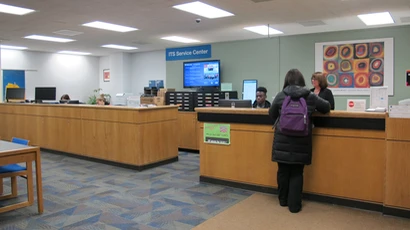
Wireless Security
Wireless networks or Wi-Fi help us connect to the Internet without using cables. This means we can use our laptops to access Wi-Fi from anywhere. But when we use the Wi-Fi at SUNY Fredonia, we need to follow some extra rules. This is because there are security issues to be aware of in a wireless area. We have to be cautious and take steps to protect our info.
Wi-Fi is different from wired networks in how they work. At Fredonia, they use 802.11b for their wireless network. It uses radio waves in the 2.4GHz range to send data between machines. The data is out in the open, so there's a risk that someone could intercept it.
There are ways to encrypt wireless data, like using WEP or LEAP. However, Fredonia has decided not to use these methods because they have known issues. Instead, they say to use Virtual Private Networking (VPN), which is more secure. Remember that when we use a wireless network, our data can be read by others.
Also, a computer on the wireless network will be open to possible unauthorized access from other parties. Proper patching of operating systems and current Virus protection are needed when using the Fredonia wireless network.
Proper Computing Habits:
- Wi-Fi should not be considered your main network connection. They are intended for simple academic and personal uses such as web browsing and email.
- Do not use a wireless connection for any University business application, such as Banner web services. The exception is if you are using an encrypted protocol.
- We strongly recommend changing your email password. Due to security issues with the wireless network, you should do this from a non-wireless computer.
We recommend that you take the following steps to ensure security:
- Avoid any credit card, banking, or other transactions which may give out sensitive data.
- Avoid using Telnet applications. The use of the SSH protocol as an alternative can be more secure.
- Avoid Web sites that require a username and password but do not use Secure Socket Layer (SSL) technology.
How to tell if a site is secured:
If you are viewing a secure site, your web browser provides a way of telling you the site is secure. The easiest way to do it is to just look at your browser window. All browsers provide a lock ![]() icon for secure sites. For most sites, only user logins need to be secured, to protect usernames and passwords. For more sensitive sites such as credit card, banking, and online payment sites, the entire site should be secured.
icon for secure sites. For most sites, only user logins need to be secured, to protect usernames and passwords. For more sensitive sites such as credit card, banking, and online payment sites, the entire site should be secured.
